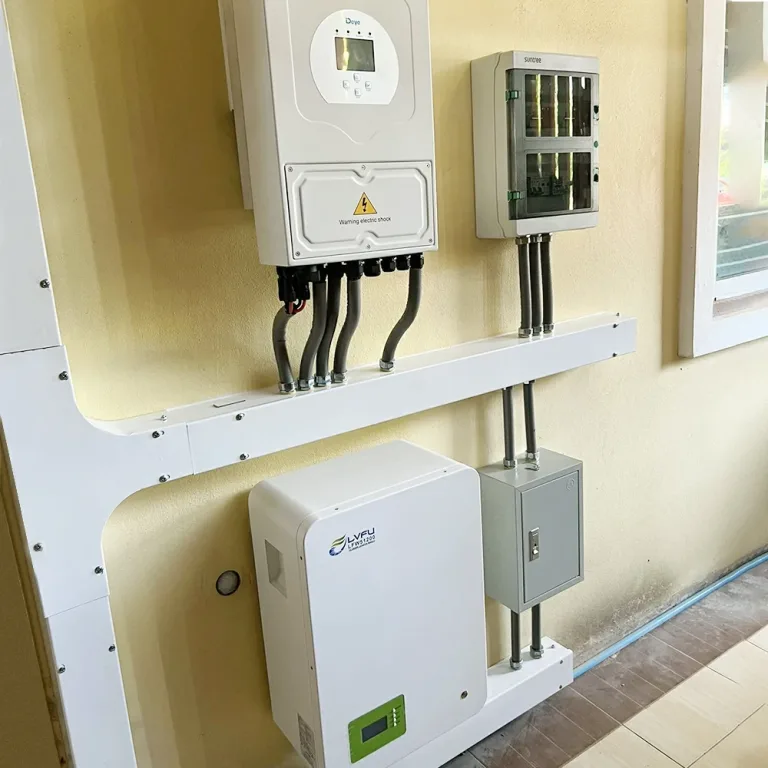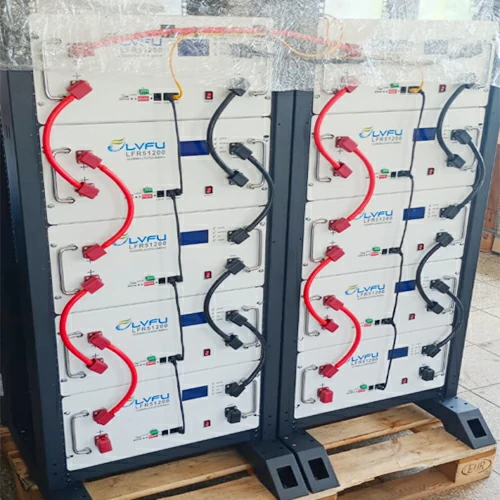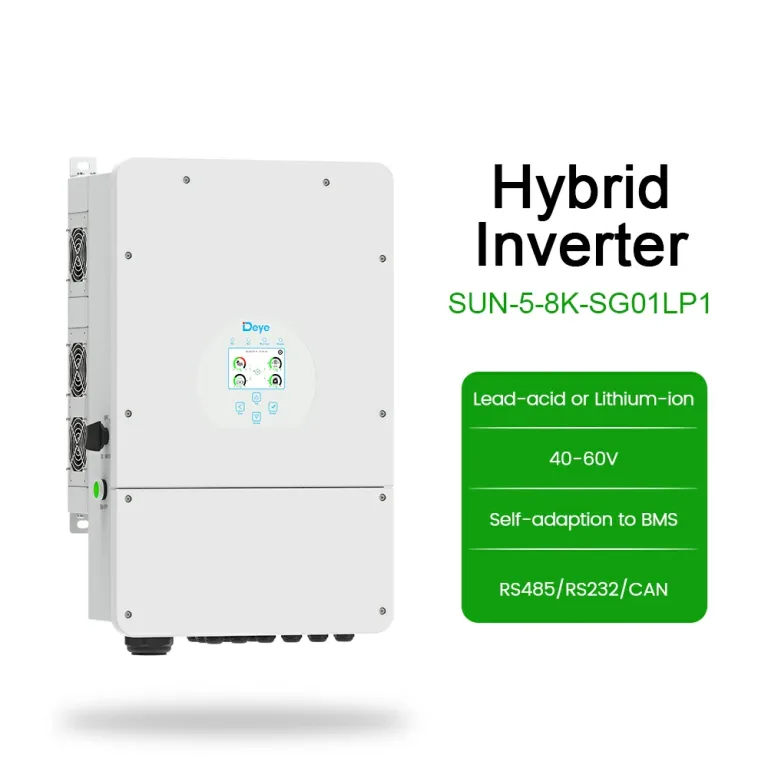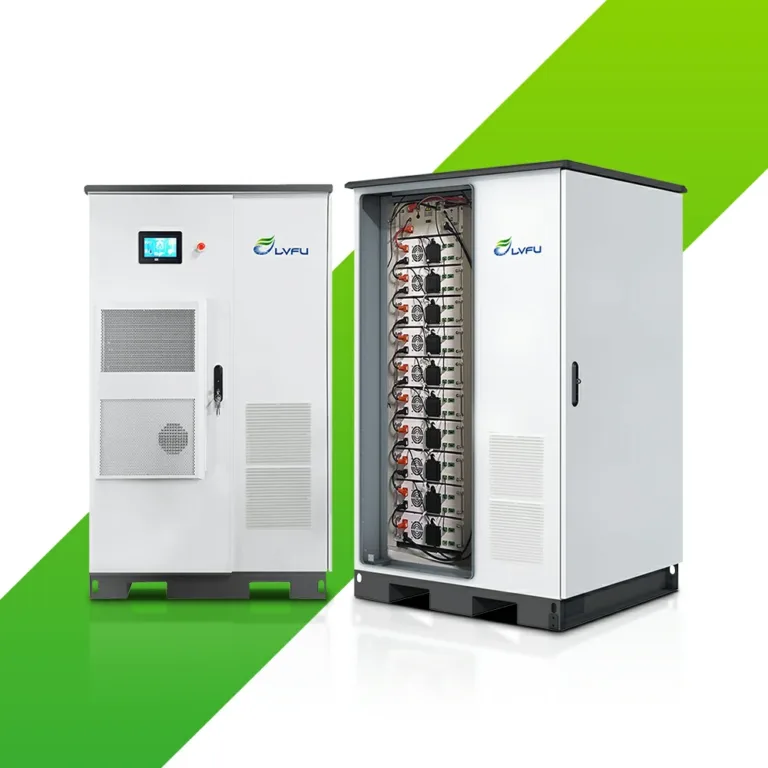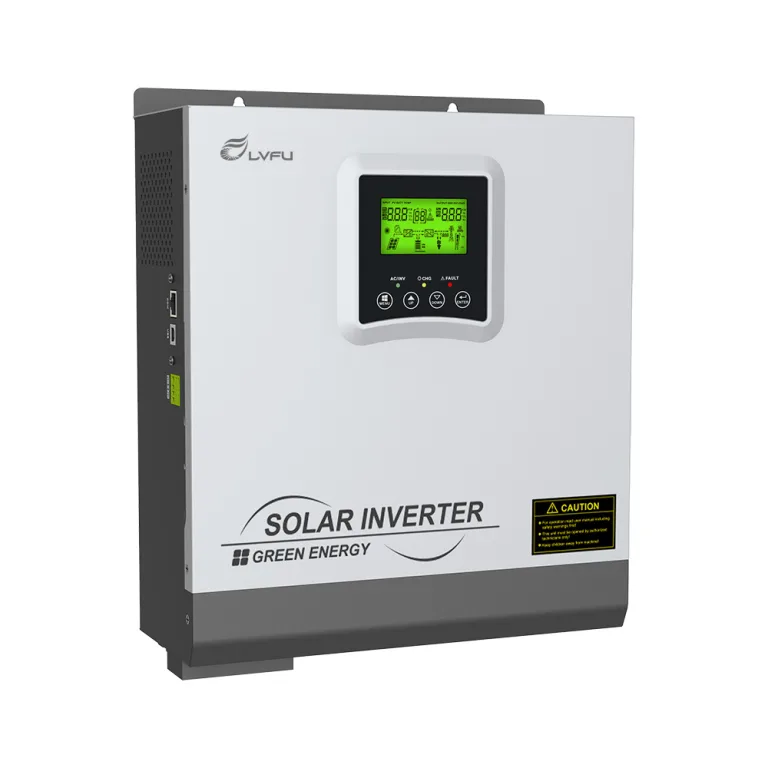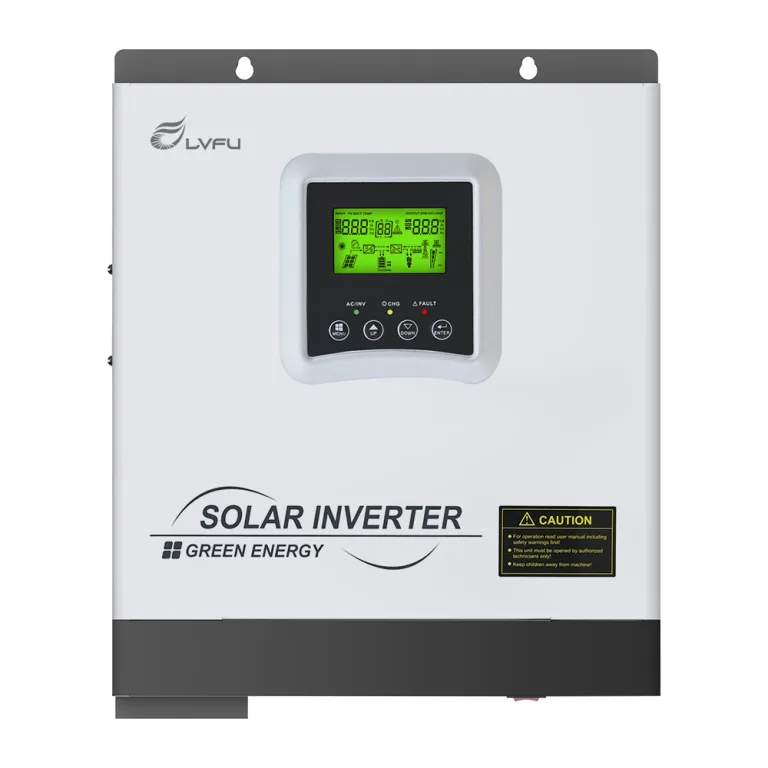Commercial & Industrial
BESS
Balance the energy peaks to lessen the strain on the grid and avoid high charges.
Run energy-heavy tasks during off-peak hours when electricity is cheaper, minimize the tariffs inherent in the peak demand by using the stored energy.
Make sure hospitals, data centers, etc. can continue operations in power failure conditions.
Strategically store energy to power energy-intensive industrial operations.
Modular PV - energy storage Outdoor Liquid-cooled Battery Cabinets
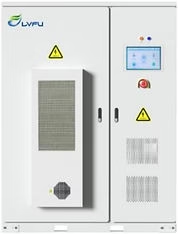
Modular PV - energy storage Outdoor Liquid-cooled Battery Cabinets
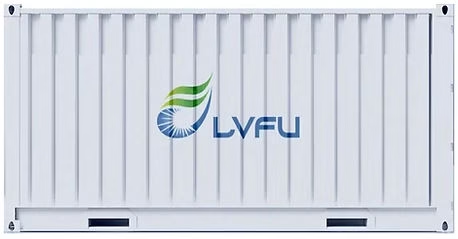
Flexible configuration, convenient installation; remote monitoring, real-time attention Seamless switching, multiple modes; advanced protection, safe and worry-free.
Economical and efficient: peak shaving and valley filling, efficient conversion, deep power supply, and seamless switching Safe and reliable: real-time monitoring, perfect mechanism, multi-level protection, comprehensive management Intelligent interaction: multiple modes, intelligent management and control, real-time monitoring, quick easy maintain.

Commercial and industrial energy storage is a typical application ofthe distributed energy storage system on the user side, and features close distance from the distributed pv power terminal and the load center, which can not only effectively improve the consumption rate of clean energy, but also effectively reduce the loss of power transmission, and help therealization of the carbon peaking and carbon neutrality goals.
The purpose of industrial and commercial energy storage is to meet the electricity demand of industrial and commercial loads, and to realize the return on investment by making use of the difference between peak and valley electricity tariffs. C&i energy storage can cooperate with pv power generation to increase the ratio of “self-consumption priority”, or it can take part in a micro grid system consisting of solar, wind, diesel generator, and other energy sources.
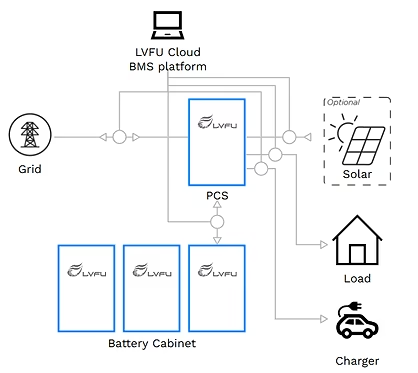
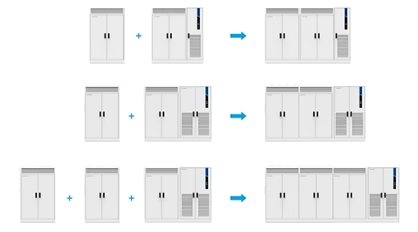
Key Feature
PV(Solar) Access
This commercial and industrial energy storageproduct operates under AC 400v on-grid condition,and can realize local manual adjustment, automaticpeak shaving, dynamic expansion and other operatingmodes through local EMS or remote EMS controlstrategies.
The system can also be optionally equipped witha PV access function to form a PV-storage system.

Flat and Valley Price Periods
In case of sufficient Pv power generation, PVs first charge batteries and then supply the remaining power to loads; In case of insufficient py power generation, Pys first charge batteries, and the grid supplies all the power to loads. However, the grid can charge batteries as well;
lf batteries are not discharged within a week after the on-grid connection of the system, the batteries will be discharged a week following the charging to maintain the electrochemical activity, and the power is determined according to the battery calculation.
Peak Price Periods
In case of sufficient Py power generation, Pys first supply power to loads and then charge batteries with the
remaining power:In case of insufficient Py power generation, batteriesdischarge to supply power to loads. lf batteries getcompletely discharged,the grid supplies power to loadswhile charging batteres.
Dynamic extension of the grid or transformer by devices When electrical loads increase, the energy storage system can be used to effectively extend the capacity of the grid and reduce the short-time overload of transformers or circuits caused by the change of loads.
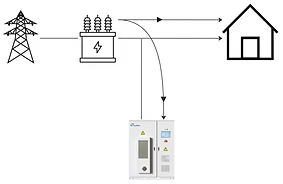
When the power P of the load side is equal to or greater than that of the gridside, the energy storage system is in the discharging and extension mode(P=P1+P2)to reduce the load of transformers and effectively prevent theoccurrence ofthe peak power.
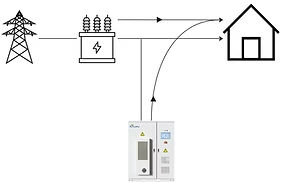
When the power P of the load side is equal to or smaller than that of the gridside, the energy storage system is in the charging mode (P1=P+P2) to store theelectric energy of the grid in batteries.
Key Feature
Dynamic Extention
Key Feature
On/Off Grid Switch
In power backup, power preservation, and other applicationscenarios, it is necessary to ensure the power supply for importantloads. The EMS system controls the charging and discharging functionsof batteries based on whether the grid is powered on or off, ensuringthat its loads and power consumption terminal are not affected by gridoutage. The switching time shall be less than or equal to 10ms.

①When the grid is powered on, the energy storage system worksin on-grid mode and charges batteries under specific settings.
② When the grid is suddenly powered off, the distributed energy storage all in-one machine inverts the battery energy storage into AC power supply for the loads, with a switching time less than 10ms, to ensure that the loads are not subject to intermittent power supply interruptions.
③When the grid is powered on again, after the system detects the grid power-on, it automatically switches to the on-grid mode, and recharges the batteries according to the policy requirements to ensure the power supply for the next power outage.

Matching Standard Modular Pv-storage System
Standard Single-gun and Dual-gun Ev Charger Access
Pv, Storage and Charging Control Strategy and Energy Scheduling
Standard EV Charger System, Matching Combination Mode
Prefabricated PV-storage-charging Integrated System
Key Feature
DC Supply
Cases
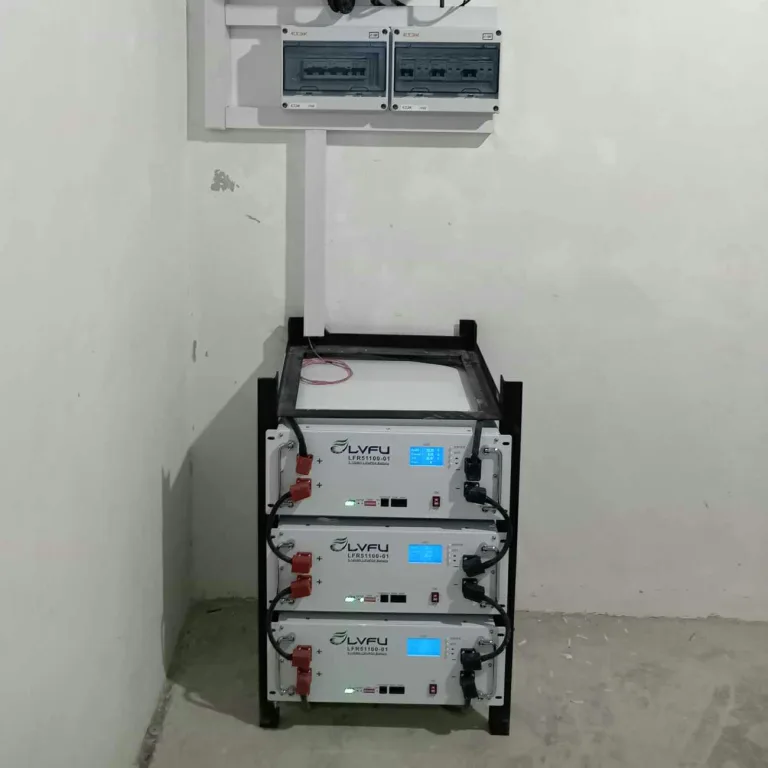
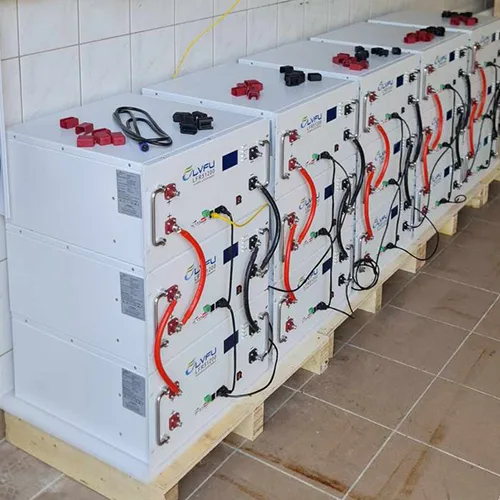

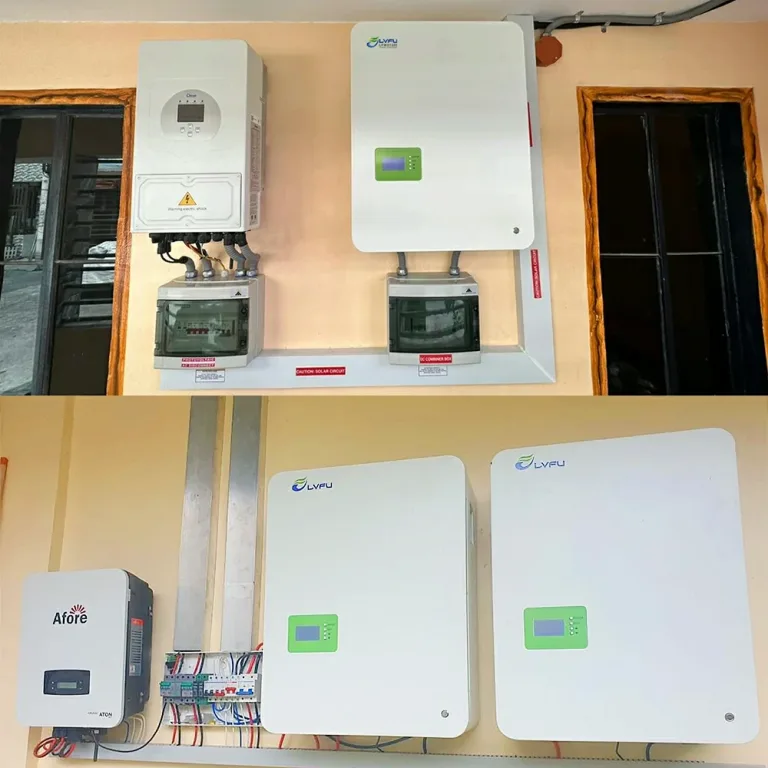
Flexible Application Industrial & commercial
All scenario energy management solution – transformer-free design, on/off-grid compatible.
Smart harmonic suppression algorithm ensures power quality, with full lifecycle O&M efficiency.
Easy Design
Single-design-fits-all approach enables continuous reuse and error prevention.
Easy Installation
Multi-product combined delivery saves ≥4 man-days per station.
Easy Procurement
One-stop ordering from single supplier, simplified warehousing and configuration.
Easy Procurement
One-stop ordering from single supplier, simplified warehousing and configuration.



